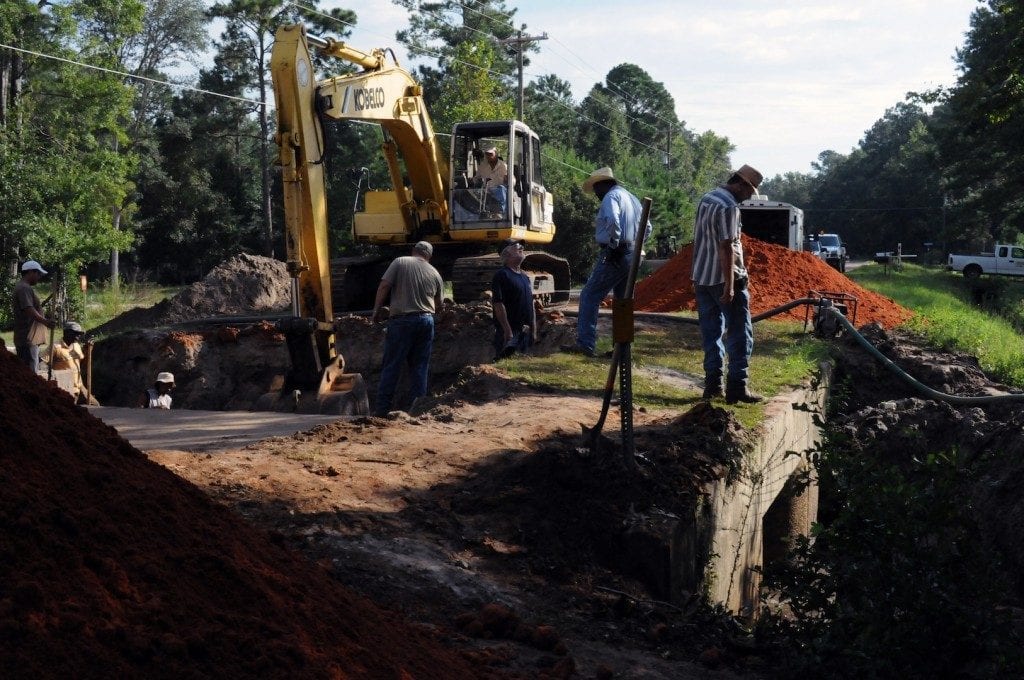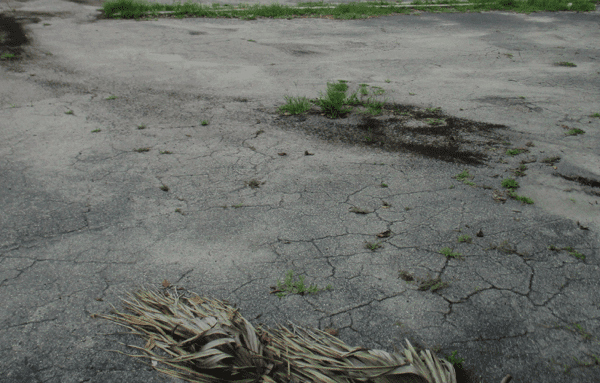Like any other element of a property’s improvements, pavement has a natural life cycle, and at some point, roads and parking areas will require maintenance and repair. While most maintenance and repair can be projected, sometimes pavement fails prematurely. Such failure can happen over the course of months or years, or it can be very sudden. Sudden pavement failure is often frightening for the owner and occupants, who may fear the presence of a sinkhole or other major structural problem.
Regardless of the speed at which it occurs, early pavement failure always represents an unplanned expense. Understanding the cause of the problem can help control those costs and ensure you don’t incur more in the near future.
Beware the Surface Solution
Because it’s an unplanned expense, many property owners attempt to contain remediation costs by implementing surface solutions to pavement problems. Applying a top coat or second layer can be tempting when faced with potholes, rutting, and crumbling edges, but when there is an underlying structural problem these solutions will be short-lived. Rather than wasting time and money on a quick fix, it pays to assess the cause and invest in an appropriate solution.
How Pavement Works
From the beginning of civilization, pavement has functioned to prevent the ground from being deformed by traffic passing over it. Packed dirt is the simplest form of “pavement” and it serves its purpose so long as the underlying surface is stable and the traffic is light.
One of the great achievements of the ancient Roman civilization was their vast improvement in road surface construction. Their engineers devised a system of layers that greatly stabilized the road surface to dissipate the pressure of wheels across the entire surface, thereby making it resistant to rutting and pothole formation. This advancement enabled entire armies and supply chains to reliably and quickly move anywhere in the known world. Many of those roads still exist, and a layered approach to construction is still used today.
In modern times, pavement continues to serve precisely the same purpose: It protects the earth below to prevent rutting and holes caused by traffic. When properly engineered and properly maintained, and barring unfortunate sub-surface accidents, modern pavement can serve its purpose with minimal upkeep for many decades.
When pavement fails early, it’s usually a result of general soil issues, localized soil issues, or poor fabrication and engineering.
1. Poor Soil
Even the best-designed and properly installed pavement will fail if the soil that it’s lying on top of has structural issues. From a property owner’s perspective, this is a worst-case scenario, because it will require removing the pavement, mitigating the soil, putting everything back together, and re-installing the pavement.
The most common soil problem in the Southeast is a high water table. If not accounted for at the time of construction, a high water table will erode the soil and eventually lead to pavement failure. This can be avoided by installing drains to keep the soil dry.
If poor soil is the culprit, a simple repair job (such as resurfacing) will not last long enough to be worth the expense. By the time the soil problem has caused pavement deterioration, the subsurface is already in such poor condition that the new surface will deteriorate quickly.
2. Localized Void
In simple terms, a localized void is simply a hole in the ground. Though it’s one of the easiest problems to fix, the sudden appearance of a localized void can induce panic in a property owner and the property’s inhabitants. Because the collapse can spread quickly, it may seem that the entire pavement area is in jeopardy, and many observers understandably believe they’re witnessing a sinkhole in action. This is very rarely the case.
Often, the cause of the void can be traced to a failure in an underground pipe—storm water or sewage pipes, for instance. When there’s a breach in the pipe, water leaks out and erodes the soil that supports the pavement. A hole (the localized void) develops in the soil, and eventually the pavement above gives way, often suddenly.
The good news for this type of failure is that it’s limited in scope and usually not a complicated fix. Start by locating drawings that show the underground water systems. Often, this will immediately show the likely source of the problem. Cart-mounted cameras can be sent down into the pipe to scan the inside and provide precise identification of the source. Once identified, the leak can be fixed, the soil shored up, and the affected pavement repaired.
However, don’t let the simplicity of the solution fool you. An inexperienced remediation company can spend a lot of time and (your) money using unnecessary technology to identify a problem that could have been found by simply pulling engineering drawings. Further, it’s important that the pavement repair take into account the difficulty of adequately compacting soil in a localized area. Uneven densities between the patched portion of pavement and the rest of the pavement can cause sinking over time. Generally, the best solution is to use flowable fill to ensure even subsurface density.
3. Poor Design and Fabrication
While the subsurface is critical to a successful pavement, the pavement design and fabrication itself matters as well. Poor design and fabrication can often be traced back to inappropriate cost-cutting during the initial design and installation—either because the property owner insisted on cheap options, the engineer didn’t know enough to put in the right materials, or the construction company cut corners where they shouldn’t have.
An inappropriate base course is a common example of poor design and fabrication. The base course is the material that is laid across the soil for the purpose of dissipating the load. The wrong base course may crack or erode, causing the pavement to deteriorate accordingly. Problems can also occur in the choice and design of the wearing course (which keeps water from permeating) or the asphalt itself.
For instance, if the design calls for six inches of base course and the contractor only puts in three, the weight of traffic will not properly dissipate, and the pavement will fail as a result.
While this problem can be expensive to repair, it’s not as drastic a problem as soil structure issues. Usually, a deficit in structural integrity can be overcome by adding additional layers of asphalt. In this case, it’s important to hire an experienced civil engineer to ensure that proper drainage patterns are retained despite the additional thickness.
Nobody wants to deal with premature pavement failure, but it’s an unfortunate fact of life for some properties. Understanding the possible causes and solutions will help you make smart choices about remediation. If you have a pavement issue you’d like to discuss with an expert, contact us to speak with a pavement engineer right away.





